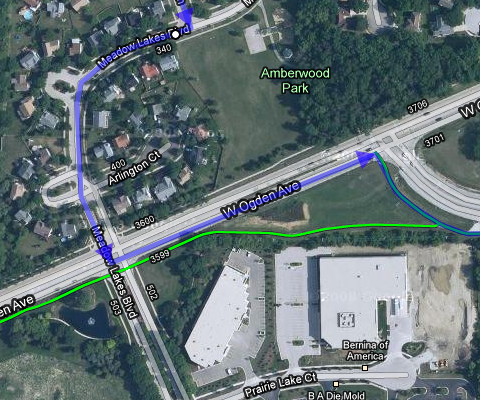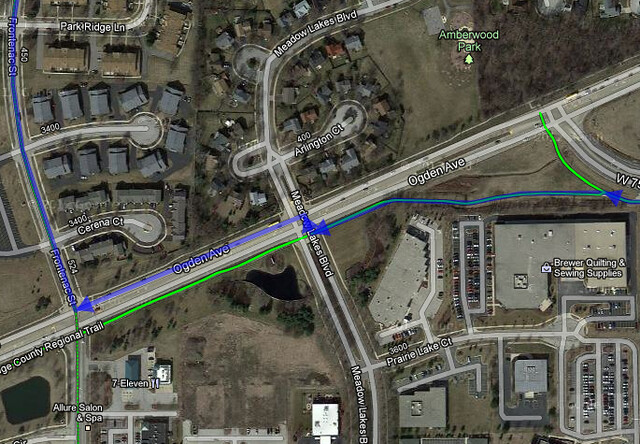Maps, algorithms, and common sense
September 21, 2012 at 8:48 AM by Dr. Drang
As I write this, my iPhone 5 is with dozens of its brethren on a UPS truck winding through Chicago’s western suburbs. I didn’t think it worth the bother to update my iPhone 4 to iOS 6 when it came out, so my experience with the new Maps app is second hand.
I’m sure it’s worse than Google Maps. Google’s been in the map business for several years now (remember how amazing it was when you first dragged a map around in a web page?) and its had all that time to be refined and improved by the information Google gathers from its users. [Update: And from its own direct work.] And Google’s had not just the time to improve it, but the motivation as well. Given its advertising potential, maps, like search and mail, must be a huge money maker.
The measure of Apple’s new Maps app is not what it’s like now—which almost has to be inferior—but what it will be like in a year or so. Is Apple willing to put in the effort to improve it, or will it allow whatever algorithms it uses to persist with wrongly placed airports and roller coaster-like renderings of streets?
Forgotten in the fun Apple Maps bashing is that Google Maps suffered similar growing pains.1 Landmarks were often in the wrong place or given the wrong name, and roads that had been in place for years didn’t appear in the map view. Google took the time to make improvements.
That doesn’t mean Google Maps is perfect or that Google makes use of all the corrections its users give it. A couple of years ago, when biking directions had just come out, I noticed that a route I’m very familiar with had some dubious—at best—directions. It put you on a very busy street when there was a parallel bike path, and it had you turn across an uncontrolled intersection when there was a traffic light a few hundred yards away.

I sent Google corrections and got an enthusiastic reply back. Today, two and a half years later, the directions have you stay on the bike path longer, but they want you to merge into traffic on the busy road at the uncontrolled Meadow Lakes intersection. Overall, I’m not sure this is an improvement.
Oddly enough, the directions for the reverse route are quite good. They have you cross Ogden at the light at Frontenac and get on the bike path to go west. Why Google’s algorithm chooses the street instead of the bike path on the eastward journey is a mystery. Even more of a mystery is why the human at Google who changed the route a couple of years ago didn’t notice the obvious advantage of staying on the bike path and out of traffic.
I wonder what maps UPS drivers use.
Update 9/22/12
Here’s a good article on the difficulties of making good maps, how Apple screwed up by relying too much on algorithms, and some ideas on what it could do to fix things. Thanks to Clark for the link.
-
Because it was first, Google Maps was able to start simple and add features as they were ready. Apple, playing catch-up, had to make a complex app right from the start. It’s a reversal of roles from the phone OS business. ↩

